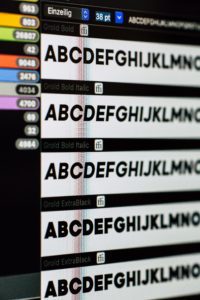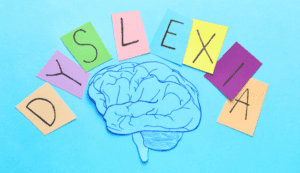What is Dyslexia?
Dyslexia is a condition which affects a person’s understanding of sound structure in language, verbal memory and processing speed. This learning difficulty affects how those with the condition both read and spell, which can pose many challenges in day-today life as well as academic situations. Dyslexia does not affect intelligence, however the challenges which it poses can affect a person’s ability to absorb information as a result. So, is dyslexia classed as a disability in the UK?
Is Dyslexia a learning disability?
In order for a condition to be classed as a disability in the UK, it must be associated with substantial effects and impairments that negatively impact a person’s ability to function in day-today life. If these circumstances are met, the condition will be classed as a disability under the Equality Act 2010. Dyslexia is a condition which does cause a person to experience these levels of effects and impairments, due to a number of symptoms which we will explore below, so is therefore classed as a disability in the UK.
 Is Dyslexia a hidden disability?
Is Dyslexia a hidden disability?
A hidden disability is one which does not present any physical signs and can go undetected to those unaware of it. The symptoms of dyslexia are typically not physical signs, so it is classed as a hidden disability. It can be challenging to live with a hidden disability because often society will put expectations upon a person to live as a non-disabled person due to the fact their symptoms are not visible. A great way to gain assistance and recognition for a hidden disability is the Hidden Disabilities Sunflower Organisation. The scheme was set up with the idea for people with hidden disabilities to wear a sunflower lanyard when in public to inform those around them
that they might need assistance in relation to the symptoms of their hidden disability. Sunflower lanyards can be obtained free of charge in supermarkets such as Tesco and Sainsbury’s, or via the Hidden Disabilities website where you can pay a small fee for a laminated card that outlines your hidden disability in detail.
Symptoms of Dyslexia
Dyslexia can be diagnosed at any age, however it can benefit a person to be diagnosed at an early age so that they can seek support during peak developmental stages. Symptoms of dyslexia to look out for when considering a diagnosis include:
- Inconsistent spelling problems
- Difficulty in learning the names and sounds of letters
- Mixing of similar shaped letters in reading and spelling
- Disordering of letters in words
- Pronunciation difficulties for long and complex words
- Incorrect wording of sentences and phrases
- Delayed speech development
- Significant delay in reading and writing speed
- Distinct difference between oral and verbal/written content.
- Poor handwriting
- Phonological difficulties
- Poor planning and organisational skills
- Poor memory levels in relation to words and numbers
- Poor note taking and revision skills
- Lack of understanding of rhyming
This wide range of symptoms can present differently from one person to the next but can evidently prove difficult to navigate life for those with a diagnosis.
 Is Dyslexia a genetic condition?
Is Dyslexia a genetic condition?
Research has shown that dyslexia is a condition which can be passed down through genetics, with a person having over 50% chance of developing the disability if a parent had the condition. This can be helpful to know as if a child has a parent with dyslexia they can consciously make themselves aware of whether the child is showing symptoms during their stages of development. Whilst it is a condition that can be passed through genetics, dyslexia can also be acquired due to environment or external factors such as injury.
Different Types of Dyslexia
There are 4 different types of dyslexia and these categories differ in the types of symptoms which a person will experience.
- Phonological Dyslexia is the most common type and is linked to the phonological symptoms of the disability such as pronunciation and breaking down of sounds, understanding symbols, spelling and other language difficulties.
- Rapid Naming Dyslexia is when a person will experience a delay or setback in retrieving the name of words and sounds. This impacts the speed at which they can read and write and can sometimes lead to using incorrect words and phrases in compromise for the word they can’t access through their thought process.
- Double Deficit Dyslexia is a type which consists of both the phonological symptoms but also a significantly poor naming speed, causing this to be the most severe form of dyslexia diagnosis.
- Surface Dyslexia is a type in which a person can manage the phonological aspects such as sounding out and pronouncing words, but struggles with identifying written content and has difficulty spelling and reading.
How to get diagnosed with Dyslexia
If you recognise that you are experiencing a range of symptoms associated with dyslexia and are often struggling with vision problems due to squinting in attempt to make out words, it is recommended to contact a dyslexia association such as the British Dyslexia Association and request to book a Diagnostic Assessment with a BDA approved assessor. A dyslexia assessment cost is not covered by the NHS as it is not classed as a medical assessment. Following the assessment, you will recieve a written report outlining the results and if you have been diagnosed you should receive recommendations on adaptations for management of your disability.
 Dyslexia Font
Dyslexia Font
If you are a student or work in any field which consists of engaging with written content, a dyslexia diagnosis may provide you with some challenges due to the symptoms experienced from the condition. One tool which can be used to aid dyslexics is using a dyslexia approved font. Fonts can play a large role in the way in which content is consumed by a reader; certain fonts such as those with serifs (accents on the corners and edges of letters) are more likely to blend/jumble together through the eyes of a person with dyslexia. Therefore, Sans-Serif fonts are more ideal as they are less likely to affect a dyslexic reader. An example of some sans-serif fonts
which help dyslexics are:
1. Arial
2. Helvetica
3. Comic Sans
4. Futura
5. Calibri
In aid for people with dyslexia, many software systems such as Jamworks notetaking software for students have accessibility settings which can be used to change fonts to aid reading and writing difficulties. In addition to the style of font, the size of lettering can make a difference in aiding a person with dyslexia’s ability to read and type content. A recommended font size for dyslexia in a sans-serif font is 12-14 point or potentially larger depending on an individual’s preferences. Character spacing can significantly reduce symptoms of dyslexia when reading as it is a tool which creates distance between characters to prevent jumbling of letters and words. An ideal character spacing size is 35%. Line spacing at a minimum of 1.5 can also be a beneficial setting in aiding dyslexia.
Disabled Students’ Allowance for a Dyslexia Diagnosis
Dyslexic students are eligible to apply for Disabled Students’ Allowance while they study at university. They can receive up to £25,ooo worth of equipment and software to assist them with this learning disability to aid their studies. You can apply for DSA through your Student Finance account, or by completing a DSA1 form here. Students with dyslexia can expect to be offered support from DSA such as a transcriber or specialist note-taker, specific technology such as a keyboard, laptop or live scribe pen. Software such as a Jamworks Pro account can also prove beneficial for students with dyslexia as they can improve their note taking during lectures and avail of accessibility settings to adapt to their individual needs
Get started with Jamworks today to build better grades and aid studying with dyslexia – click here to learn more.

